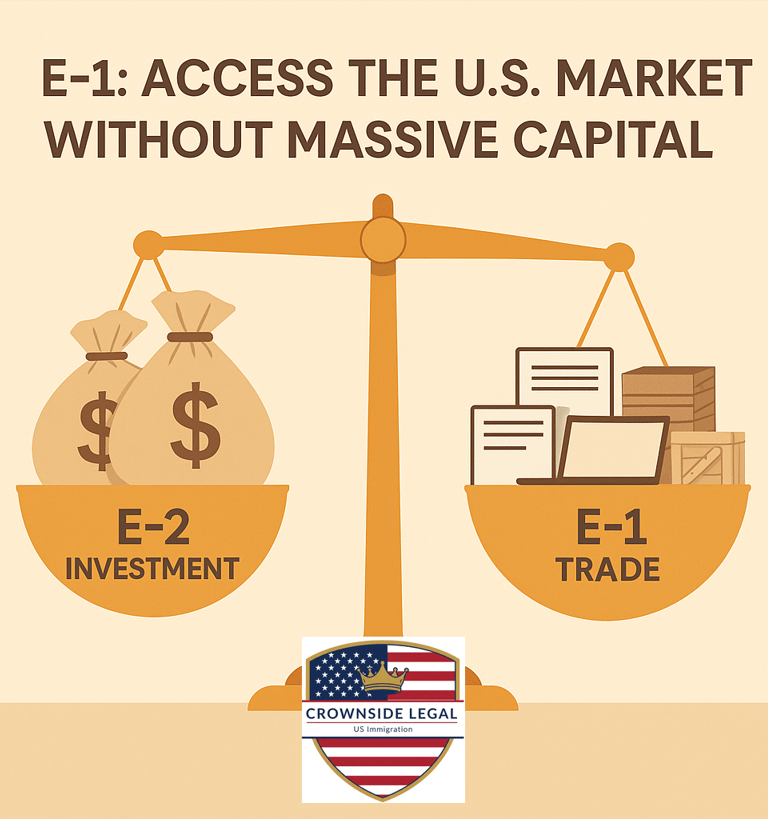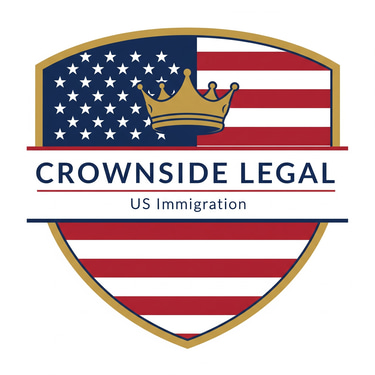Why the H-1B Is No Longer a Great Option — And Why the E-1 Could Be
Why the E-1 is Worth a Look
Andrew Sones
9/29/20253 min read


For decades, the H-1B visa has been seen as the flagship route for skilled professionals looking to enter the United States. British companies seeking to expand operations or transfer employees overseas often looked no further than the H-1B.
But times have changed. Lottery odds are worse than ever, eligibility rules are tightening, and the process has become costly, slow and uncertain. For UK businesses, the H-1B is simply no longer the reliable solution it once was.
The good news? There is a strong alternative: the E-1 Treaty Trader visa. Unlike the H-1B, the E-1 does not require you to gamble on a lottery or commit vast sums of upfront capital. It is based on trade, not investment, and for many UK nationals it can provide a clear and renewable pathway into the U.S.
━━━━━━━━━━━━━━━━━━━━━━━━━━━━━━━
Why the H-1B Visa Is No Longer Effective
The H-1B visa is capped at 85,000 visas per year (65,000 regular + 20,000 for U.S. advanced degree holders). In practice, the demand is several times greater than supply. In some years, your chance of being selected in the lottery is less than 15%.
Even if your petition is chosen, the process remains burdensome. Employers must file Form I-129 with supporting evidence, comply with prevailing wage levels, and demonstrate a strong degree-to-occupation match. Increasingly, USCIS issues Requests for Evidence (RFEs) which delay approval and add legal costs.
For British companies, this unpredictability means the H-1B is a poor foundation for U.S. expansion.
━━━━━━━━━━━━━━━━━━━━━━━━━━━━━━━
How the E-1 Treaty Trader Visa Works
The E-1 visa is available to citizens of countries that maintain a treaty of commerce and navigation with the United States. The UK is one such treaty country.
Instead of relying on chance, eligibility is based on substantial trade between the U.S. and the treaty country. Trade may involve goods, services, technology, insurance or even certain professional contracts.
Key advantages include:
No lottery system — predictable eligibility rather than chance.
No large upfront capital — unlike the E-2 investor visa, which usually requires hundreds of thousands of pounds.
Covers business owners and employees — executives, managers and specialists may all qualify.
Indefinitely renewable — provided trade continues, E-1 visas may be extended every two years.
━━━━━━━━━━━━━━━━━━━━━━━━━━━━━━━
Why British Businesses Should Consider the E-1
The E-1 visa is an excellent fit for:
UK companies already trading with American suppliers or clients.
Entrepreneurs looking to enter the U.S. market without major capital investment.
Businesses that need to station key executives or specialists in the U.S. for the long term.
Where the H-1B is restrictive and uncertain, the E-1 is flexible and renewable. For British firms, it is often the most cost-effective route to establishing a U.S. presence.
━━━━━━━━━━━━━━━━━━━━━━━━━━━━━━━
The Application Process
Unlike the H-1B, which requires a petition through Form I-129, E-1 applications are generally lodged at a U.S. Embassy or Consulate abroad. UK applicants typically apply at the U.S. Embassy in London.
The process involves submitting Form DS-160 (Nonimmigrant Visa Application) and Form DS-156E (Nonimmigrant Treaty Trader/Investor Application). Documentation includes:
Contracts, invoices, and records of ongoing trade.
Shipping records or service agreements between UK and U.S. entities.
Business plans and financial statements.
Proof of nationality for the principal trader and employees.
For employees, the company must show that the role is executive, managerial, or requires essential skills.
━━━━━━━━━━━━━━━━━━━━━━━━━━━━━━━
Comparing H-1B and E-1
H-1B: Lottery, annual cap, degree requirements, wage obligations, RFEs common.
E-1: No lottery, no annual cap, no minimum degree requirement, based on trade not investment, renewable indefinitely.
In short, the E-1 allows UK businesses to leverage existing trade links to access the U.S. market, while avoiding the uncertainty and delays of the H-1B system.
━━━━━━━━━━━━━━━━━━━━━━━━━━━━━━━
Bottom Line
For UK nationals and companies, the H-1B is increasingly impractical. Low lottery odds, high compliance burdens, and unpredictable outcomes make it a risky choice.
The E-1 Treaty Trader visa, however, provides a clear, flexible and cost-effective pathway. It enables UK businesses to establish a reliable presence in the U.S. without the capital requirements of the E-2 or the uncertainty of the H-1B.
At Crownside Legal, we assist British companies and families in navigating the U.S. immigration process. Whether you are a business owner trading with the U.S. or an employee seeking assignment overseas, we can help you structure an E-1 application that succeeds.
📅 Book a free consultation: calendly.com/crownside
💬 WhatsApp us: wa.link/2liwjz
🌐 Learn more: usalaw.co.uk/about
━━━━━━━━━━━━━━━━━━━━━━━━━━━━━━━
FAQs
Does the E-1 visa require a large investment?
No. Unlike the E-2 visa, the E-1 is based on trade, not investment. You must show substantial ongoing trade, but you do not need to invest hundreds of thousands of pounds.
What counts as “trade” for the E-1 visa?
Goods, services, technology, insurance, and professional services all qualify if exchanged between the UK and the U.S.
Can my company’s employees apply for the E-1?
Yes. Executives, managers and essential specialists may all be eligible if they share the same nationality as the treaty business owner.
How long does an E-1 visa last?
It is generally issued for up to two years at a time, but can be renewed indefinitely as long as qualifying trade continues.
Does the E-1 visa lead to a green card?
The E-1 is a nonimmigrant visa and does not directly provide permanent residency. However, many E-1 holders later pursue employment- or family-based green cards.
